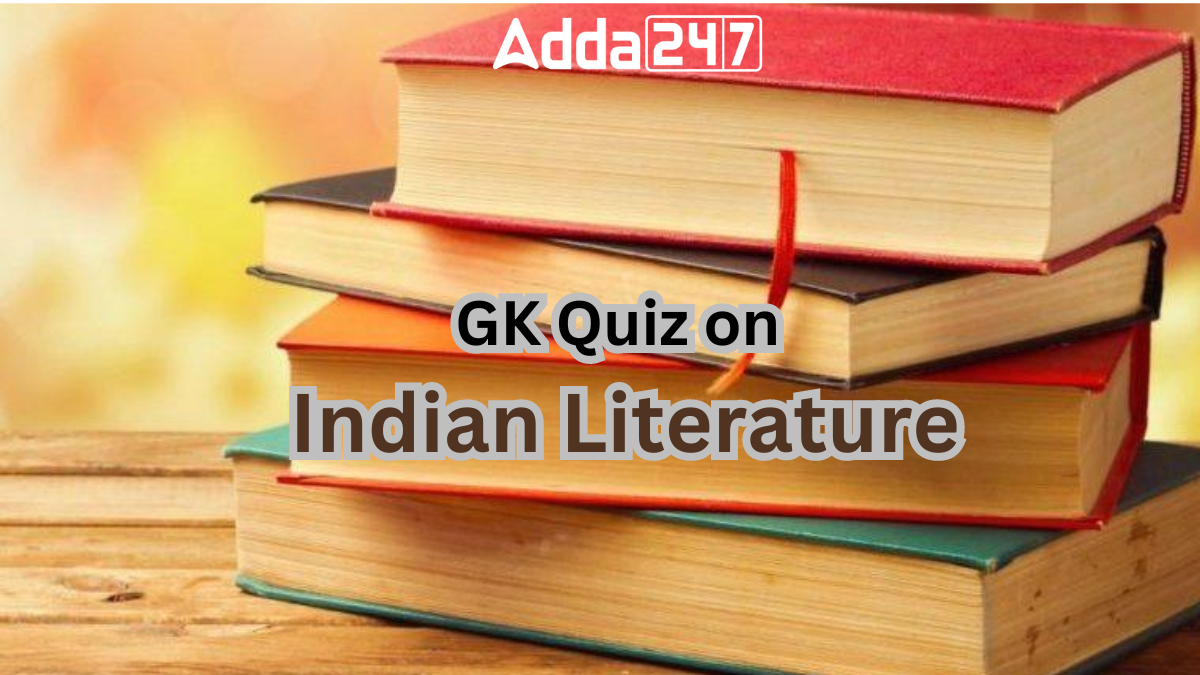Indian literature is a rich tapestry woven with diverse languages, cultures, and traditions. From ancient epics to modern masterpieces, it reflects the essence of India’s heritage and ethos. Test your knowledge of this literary treasure trove with our GK quiz on Indian literature.
Indian Literatures
Indian literature is a vibrant tapestry woven from diverse linguistic, cultural, and regional threads. Spanning centuries, it encompasses ancient epics, classical texts, modern novels, poetry, and drama. Reflecting India’s rich heritage, literature captures the essence of its traditions, values, and societal complexities. From the Sanskrit epics Ramayana and Mahabharata to the contemporary works of authors like Rabindranath Tagore and Arundhati Roy, Indian literature offers a kaleidoscopic view of the nation’s literary heritage.
GK Quiz on Indian Literature, Questions and Answers
Indian literature is a vibrant tapestry woven from diverse linguistic, cultural, and regional threads. Let’s boost your knowledge about the Indian Literature through our GK (General Knowledge) quiz on Indian Literature:
Q1. Who is the author of the famous epic “Mahabharata”?
a) Valmiki
b) Ved Vyas
c) Kalidasa
d) Tulsidas
S1. Ans. (b) Ved Vyas
Q2. Which Indian poet is known as the “Bard of Bengal”?
a) Rabindranath Tagore
b) Sarojini Naidu
c) Subramania Bharati
d) Bankim Chandra Chattopadhyay
S2. Ans. (a) Rabindranath Tagore
Q3. Who wrote the famous play “Abhijnanasakuntalam”?
a) Rabindranath Tagore
b) Kalidasa
c) Premchand
d) Bankim Chandra Chattopadhyay
S3. Ans. (b) Kalidasa
Q4. Which Indian author won the Nobel Prize in Literature in 1913?
a) R. K. Narayan
b) Sarojini Naidu
c) Rabindranath Tagore
d) Vikram Seth
S4. Ans. (c) Rabindranath Tagore
Q5. Who is the author of the famous novel “Midnight’s Children”?
a) Vikram Seth
b) Arundhati Roy
c) Salman Rushdie
d) Anita Desai
S5. Ans. (c) Salman Rushdie
Q6. The book “Godan” was penned by which renowned Indian author?
a) Munshi Premchand
b) R. K. Narayan
c) Rabindranath Tagore
d) Bankim Chandra Chattopadhyay
S6. Ans. (a) Munshi Premchand
Q7. Who wrote the novel “The Guide”?
a) R. K. Narayan
b) Rabindranath Tagore
c) Salman Rushdie
d) Arundhati Roy
S7. Ans. (a) R. K. Narayan
Q8. Which of the following is NOT a work by Kalidasa?
a) Raghuvamsha
b) Meghaduta
c) Ritu Samhara
d) Gitanjali
S8. Ans. (d) Gitanjali
Q9. Who wrote the famous poem “Where the Mind is Without Fear”?
a) Sarojini Naidu
b) Rabindranath Tagore
c) Subramania Bharati
d) Bankim Chandra Chattopadhyay
S9. Ans. (b) Rabindranath Tagore
Q10. The novel “The White Tiger” is authored by:
a) Vikram Seth
b) Aravind Adiga
c) Chetan Bhagat
d) Jhumpa Lahiri
S10. Ans. (b) Aravind Adiga
Q11. Who is known as the author of “The Palace of Illusions”?
a) Kiran Desai
b) Chitra Banerjee Divakaruni
c) Anita Nair
d) Anita Desai
S11. Ans. (b) Chitra Banerjee Divakaruni
Q12. The novel “A Suitable Boy” is written by:
a) Vikram Seth
b) Arundhati Roy
c) Kiran Desai
d) Jhumpa Lahiri
S12. Ans. (a) Vikram Seth
Q13. The Jataka tales, a collection of Buddhist fables, originated in which Indian language?
(a) Hindi
(b) Urdu
(c) Pali
(d) Bengali
S13. Ans. (c) Pali
Q14. Who wrote the “Panchatantra”?
a) Vishnu Sharma
b) Chanakya
c) Kālidāsa
d) None of these
S14. Ans. (a) Vishnu Sharma
Q15. In which year National Book Trust was founded?
a) 1 August 1957
b) 1 August 1963
c) 15 August 1957
d) None of these
S15. Ans. (a) 1 August 1957




 Exploring Bondi Beach: Sun, Surf and Syd...
Exploring Bondi Beach: Sun, Surf and Syd...
 Chakrashila Wildlife Sanctuary: Location...
Chakrashila Wildlife Sanctuary: Location...
 Which Forest is Known as the Monsoon For...
Which Forest is Known as the Monsoon For...







